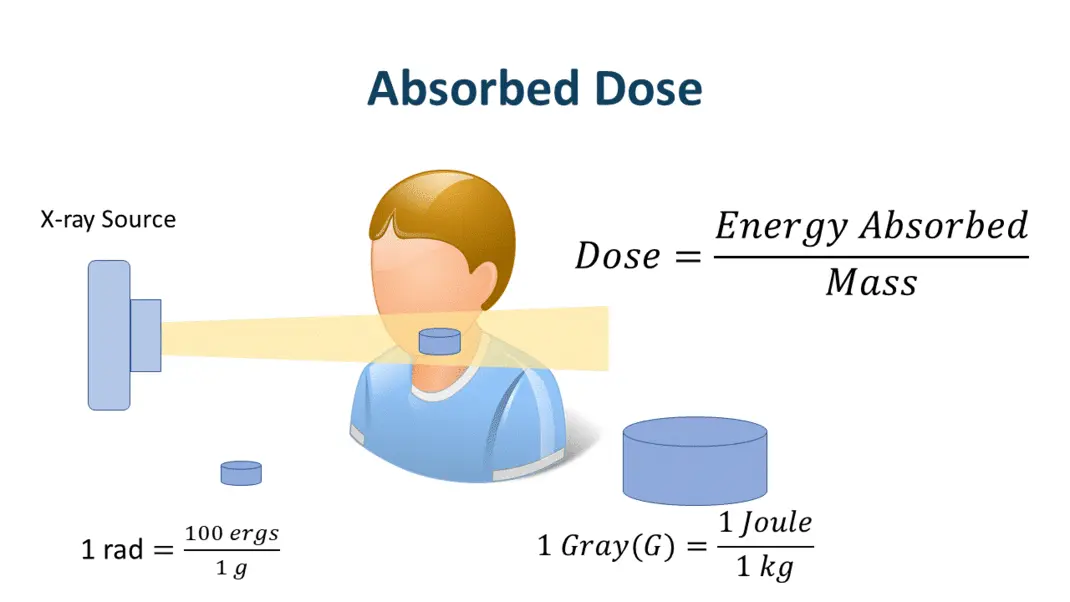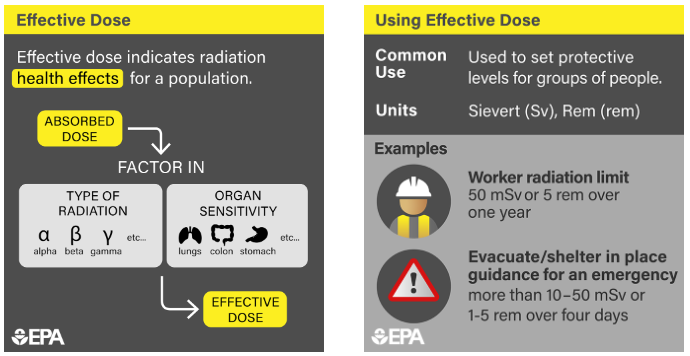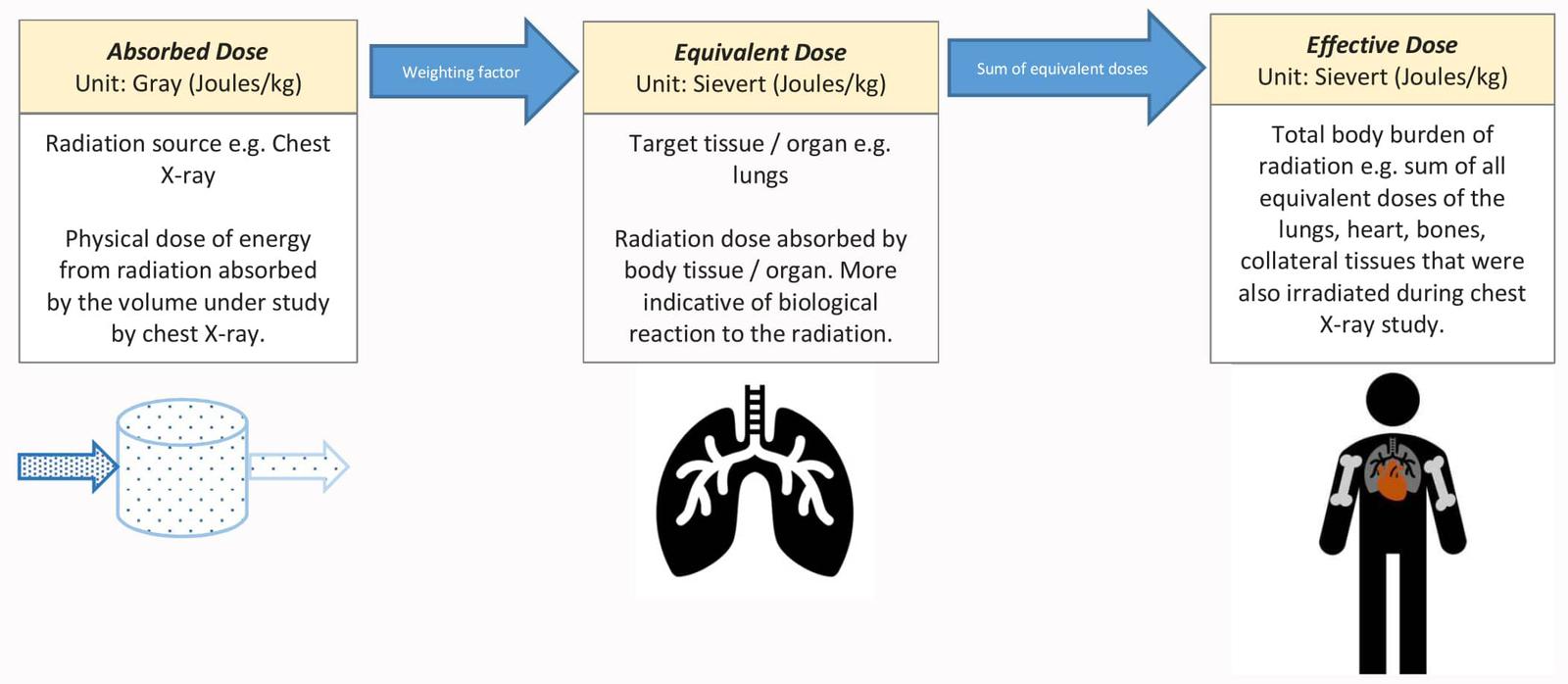Introduction For Doses¶
Radiation exposure and dose concepts are important for safety in radiation facilities and medical procedures. Organizations like ICRU, ICRP, and NCRP make guidelines and protocols to monitor radiation exposure for the workers in the radiation and for the general public.
Type Of Doses¶
Absorbed Dose¶
Different materials absorb varying energy amounts. This energy per mass unit is known as the absorbed dose. The si unit for measuring the absorbed dose is grey, which is 1 Joule/kg.
 Image Link
Image Link
Dose Equivalent¶
Ionization affects organisms differently based on radiation type. Even with equal energy absorbed per unit mass, the impact varies significantly for heavily charged particles. Biological harm is linked to linear energy transfer H = D * Q
Effective Dose¶

Summary¶
Introduction For Dosimeters¶
Dosimeters are instruments used in various industries and environments to measure and monitor levels of ionizing radiation exposure. There are two types of dosimeters the first type enables real-time tracking of radiation exposure. The other type is the traditional passive dosemeters they provide valuable insight for the worker in the radiation field about the current or real-time exposure to radiation.

Thermoluminescent dosimeter (TLD)¶
is a passive radiation detection device that is used for personal dose monitoring or to measure patient dose.
The two most common types of TLDs are calcium fluoride and lithium fluoride.
Advantages of TLDs
-
TLDs can measure a greater range of doses compared to film badges
-
Reusable
-
Not expensive
-
Available in various forms
Disadvantage of TLDs
- Each dose cannot be read out more than once.
- Storage instability
- Light sensitivity
How does it work?
As ionizing radiation passes through the thermoluminescent dosimeter electrons in the material are moved into dosimetric traps and held there until the detector is heated up. Once the temperature reaches a maximum of approximately 400°C the electrons in these dosimetric traps begin to move. This movement creates a light pulse to be emitted also known as luminescence. A photomultiplier tube (PMT) is used to count this light emitted and the amount of light emitted is proportional to the amount of ionizing radiation exposure the dosimeter received.
Optically Stimulated Luminescence (OSL)¶
Optically Stimulated Luminescence (OSL) dosimeters are working based on luminescent properties of certain materials. When ionizing radiation interacts with these materials, it generates electron-hole pairs. Some of these charges become trapped at lattice defects, forming localized energy states known as traps. Over time, these trapped charges reach an equilibrium between being trapped and being released back to their original states.
Here’s how OSL works:
-
Radiation Interaction: Ionizing radiation creates electron-hole pairs in the material.
-
Trap Formation: Some charges are trapped in defect sites within the crystal lattice.
-
Stimulation: When exposed to a specific wavelength of light, trapped electrons absorb energy and move to higher energy states, creating electron-hole pairs in the process.
-
Recombination: Electrons trapped in the lattice defects recombine with the holes, releasing stored energy in the form of visible light.
-
Measuring Luminescence: The emitted light, proportional to the radiation dose, is detected and quantified using a photodetector.
The common crystal used in these detectors is aluminium oxide doped with carbon (Al2O3:C), this is the crystal used in LANDAUER company.
Electronic Personal Dosimeter (EPD)¶
Used when real-time measurement is needed. It consists of 3 silicon diode detectors. When radiation falls into the silicon diode chip the detector gives an electric signal that feeds a chain of amplifiers, this signal is proportional to the energy deposited in the chip. At the end a reading of how much the effective dose the worker has received is shown in the LCD screen. The difference between the 3 silicon chips is that each of them measures different things one measures the effective dose from the soft gamma the other is from the hard gamma and the last one from the beta radiation. The EPD dosimeter is useful in high-dose areas where the worker needs to have the reading instantly. However, it is less accurate than the TLD when it comes to the accumulative dose.
